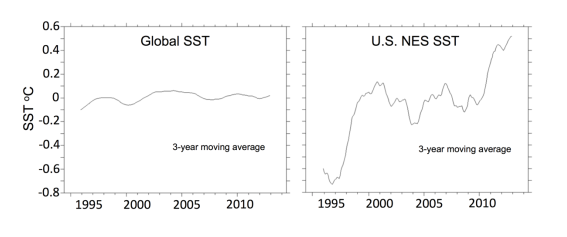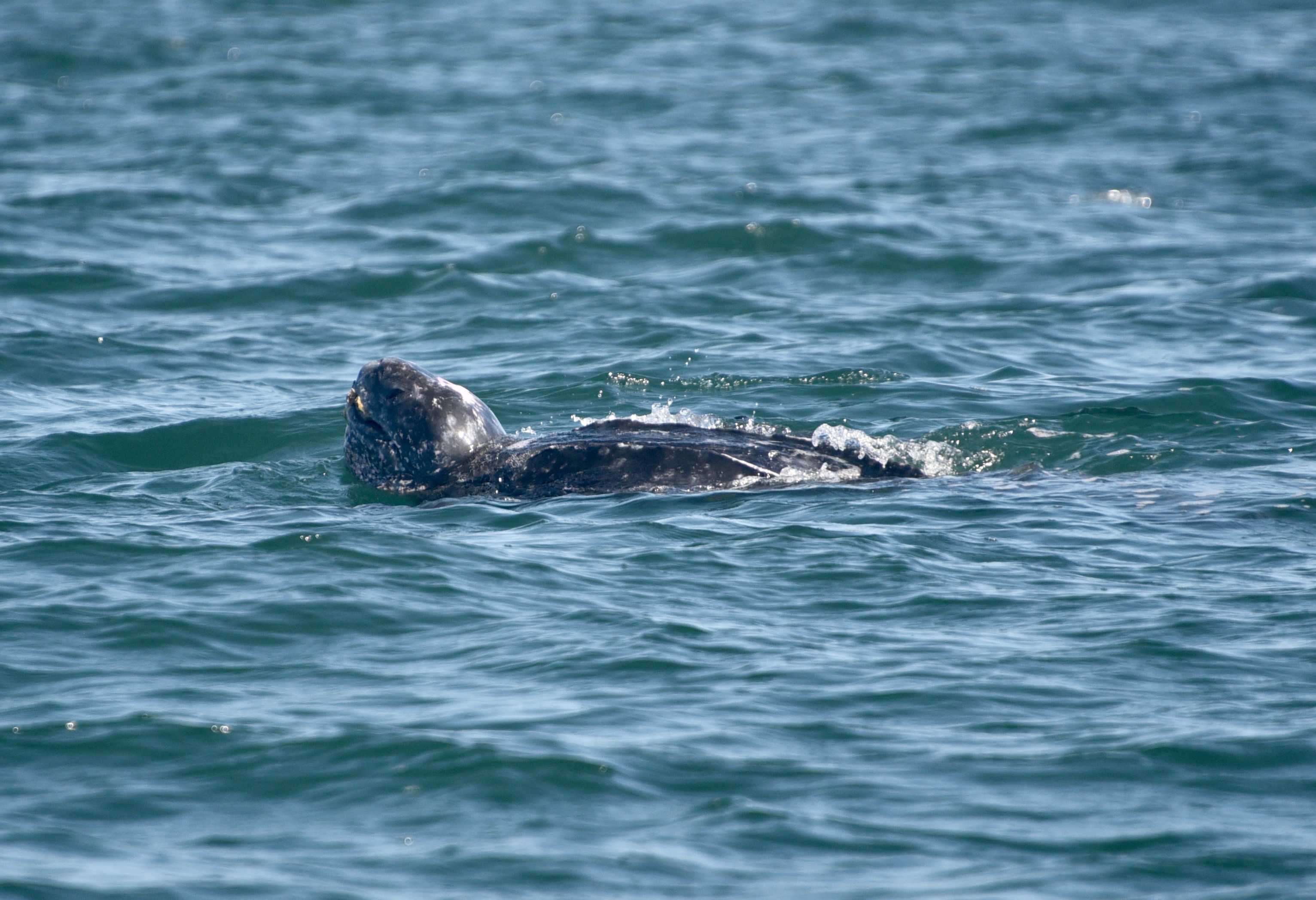Projecting effects of climate change on leatherback turtle habitat within the US Northeast shelf
Collaborators: V. Saba, T. Miller, B. Galuardi & K. Hyde
Over the past 20 years, ocean surface temperature in the United States Northeast Shelf (U.S. NES) has warmed at a substantially higher rate than the global average (Figure 1). Since the year 1900, western boundary regions like the U.S. NES have warmed in the surface layers two to three times faster than the global average. Changes in temperature and other oceanographic features have already impacted the distribution of multiple marine species in the U.S. NES. The U.S. NES provides important seasonal foraging habitat for endangered leatherback sea turtles (Dermochelys coriacea), with turtles migrating thousands of kilometers to feed on gelatinous zooplankton in this region (Figure 2). Climate-driven changes in temperature, salinity, and other oceanographic features (e.g., circulation patterns) are likely to affect the distribution of leatherbacks’ gelatinous prey, potentially resulting in climate-driven changes in leatherback foraging areas within the U.S. NES.

Figure 1. NOAA Reynold’s sea surface temperature (SST) anomalies from 1994 to 2012 in the global ocean vs. the U.S. NES. Anomalies are based on the mean SST (daily, 25-km) from 1994-2014.
We are evaluating future climate change impacts on leatherback turtle habitat within the U.S. NES using high-resolution global climate model projections and empirical data on leatherback turtle movements and habitat characteristics. By combining remotely sensed environmental and leatherback distribution data in a habitat model, we can assess, simulate, and project suitable habitat for leatherbacks within the U.S. NES. We will couple our leatherback habitat model with climate projections of physical variables (i.e. ocean temperature, salinity, density gradients, retention areas) from the NOAA Geophysical Fluid Dynamics Laboratory high-resolution global climate model (CM2.6) to project changes in habitat quality and quantity (spatially and temporally) under various climate change scenarios (atmospheric CO2 doubling and quadrupling).

Figure 2. Leatherback turtle foraging on the U.S. NES. Photo by K. Dodge/WHOI
Funding Agencies
The National Ocean and Atmospheric Administration (NOAA) funded this research collaboration.

Partners/Collaborators
This is a joint project with the NOAA Geophysical Fluid Dynamics Laboratory, NOAA Northeast Fisheries Science Center, and the NOAA Greater Atlantic Region.